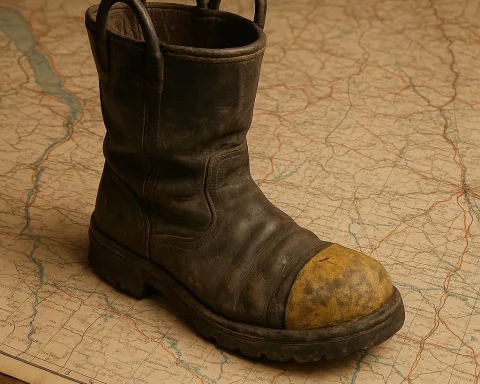On a bright Wednesday afternoon, a minibus taxi on Cape Town’s steep and narrow Kloof Nek Road tried to overtake a scooter but lost control, crashing into a truck and a car. The accident caused chaos and injured eight people, highlighting how dangerous this busy, twisty road has become. With old road designs, heavy traffic, and fast-moving vehicles like scooters and taxis, locals worry that more crashes will happen unless safety measures improve. The city now faces tough questions about how to keep its busy streets safe while moving forward.
What caused the major collision on Kloof Nek Road in Cape Town?
The collision on Kloof Nek Road occurred when a minibus taxi attempted to overtake a delivery scooter on a narrow, steep slope but lost control, crashing into a truck and a sedan. Dangerous road conditions, tight curves, and high traffic volumes contributed to the accident’s severity.
The Incident That Stopped the City
On a sunlit Wednesday afternoon, the vibrant energy of Cape Town was abruptly interrupted on the winding ascent of Kloof Nek Road. This historic thoroughfare, stretching between the bustling city centre and the scenic Atlantic Seaboard, reverberated not with its usual flow of traffic, but with the harrowing sounds of disaster. As daylight waned and shadows lengthened across the Gardens, a violent accident unfolded that would etch itself into the city’s collective memory.
The drama began when a minibus taxi, packed with commuters, made a fateful decision on the narrow slope near Firdale Avenue. Attempting to overtake a delivery scooter, the driver squeezed into a dangerously slim margin between the sidewalk and oncoming cars. Survivors later recounted the screech of brakes and the shared realization that disaster was imminent. The taxi lost control, slamming with brutal force into an approaching truck and a sedan. Within seconds, metal twisted and glass shattered, transforming the busy street into a chaotic tableau.
Onlookers, shaken and breathless, described the terrifying chain of events to reporters. One passenger vividly remembered the taxi’s desperate maneuver, unable to avoid impending impact. Emergency teams responded within minutes, their sirens and flashing lights turning the roadway into a stage of urgent rescue efforts. Paramedics and firefighters worked tirelessly to free the trapped driver and a commuter, while others tended to the injured. Eight people required emergency care, with four rushed to hospital due to serious injuries, including cases of head trauma—a grim testament to the sheer violence of the crash.
Kloof Nek: Beauty, Danger, and Growing Anxiety
Kloof Nek Road, famed for its sweeping views of Cape Town and its unforgiving curves, has long attracted both admiration and apprehension. The very qualities that make this route a scenic marvel—its steep gradients, tight bends, and panoramic vistas—also mark it as a hazard for even skilled drivers. The road’s colonial-era design, never intended for the volume and variety of modern vehicles, compounds these risks.
Local residents, many of whom have witnessed a rise in collisions over recent years, voice increasing concern about road safety. Their worries intensified after a recent crash just over a week before the taxi incident, when a tourist bus lost its brakes while descending the same slope. The bus careened out of control, smashing into parked cars and a MyCiTi bus shelter, reigniting debate about the adequacy of current safety measures. The memory of that disaster lingered, amplifying the city’s unease as news of the taxi accident spread.
Cape Town’s infrastructure, built for a different era, now strains under the demands of a growing, fast-paced metropolis. The relentless pressure of traffic, the mix of minibus taxis, scooters, and delivery vehicles, and the unpredictable behavior of drivers and pedestrians alike all contribute to an atmosphere of tension. Residents fear that without significant intervention—whether through improved road design or stricter enforcement—such tragedies will only become more frequent.
Transport Tensions and the Human Cost
The chaos on Kloof Nek Road reveals broader challenges within Cape Town’s transit system. Like many rapidly expanding urban centres, the city struggles to balance the needs of efficient mass transportation with the constraints of aging roads. Minibus taxis, a backbone of local commuting, operate under immense pressure to deliver passengers swiftly and inexpensively. Their drivers must navigate congested lanes and often make split-second decisions in high-stress conditions, sometimes pushing the limits of safety.
Meanwhile, the rise of delivery scooters—symbols of the city’s thriving gig economy—adds a new layer of complexity. These nimble vehicles dart through traffic, performing rapid drop-offs but also raising the risk of collisions. The intersection of speed, efficiency, and urban congestion creates an environment where accidents seem almost inevitable.
In the wake of Wednesday’s crash, calls for action have grown louder. City officials debate potential solutions: installing speed bumps, adding clearer signage, and tightening driver regulations. Yet, these proposals often run into the realities of budget constraints and administrative red tape. The situation echoes past debates among urban planners, who once dreamed of perfectly rational cities but underestimated the unpredictable rhythms of daily life.
High-Profile Crashes and Community Reflection
The tragedy on Kloof Nek Road is not an isolated event. Just weeks earlier, [High Level Road in Sea Point](https://capetown.today/a-vibrant-celebration-of-arts-culture-and-heritage-the-regent-road-social-in-sea-point/) witnessed a headline-grabbing collision involving Nigerian rapper 3GAR and his R3 million McLaren. The sight of a luxury sports car transformed into a wrecked heap sparked citywide debate about justice and accountability. Many questioned why, weeks after the incident, authorities had yet to press charges. Nicholas Gostell of the Democratic Alliance publicly pressed for answers, highlighting the ongoing tension between public expectations and official action.
Beyond sensational headlines, these accidents reveal a deeper vulnerability that unites residents from neighbourhoods like Gardens to Sea Point. Once seen as safe enclaves, these areas now feel the growing strain of modern traffic. Long-time locals recall a slower age, when ox wagons hauled goods along dusty paths and life seemed to move with the land. Today, the city pulses with urgency and unpredictability, as cars, buses, taxis, and scooters compete for space on roads never designed for such pressure.
Personal accounts from the Kloof Nek incident highlight the emotional toll. A young woman, uninjured but shaken, described her lingering anxiety every time she boards a taxi. A delivery driver who narrowly avoided the crash spoke of a helplessness that now haunts his daily routes. These stories, raw and immediate, form part of a larger urban narrative: one of resilience, fear, and the search for safety amid chaos.
Beyond the Crash: Art, Responsibility, and the City’s Future
Cape Town’s unique cultural legacy finds unexpected echoes in the aftermath of its accidents. The collision of metal and movement on its roads resembles the fractured forms of Cubist art, where multiple perspectives converge in a single, dynamic scene. The interplay of sunlight, speed, and motion mirrors the city’s creative energy—a reminder that beauty and danger often walk hand in hand.
In the days following the Kloof Nek Road crash, conversations frequently return to questions of responsibility. What duties do drivers owe each other amid the daily dance of traffic? How can city officials effectively prioritize safety without sacrificing the efficiency that modern life demands? As Cape Town’s population swells and its streets grow busier, these questions become ever more pressing, demanding both immediate solutions and a reevaluation of shared values.
The narrative of that fateful Wednesday afternoon—woven from the threads of individual stories, historic roads, and urban pressures—captures a truth at the heart of Cape Town’s ongoing evolution. The city, rich with history and ambition, stands poised between the allure of progress and the ever-present risk that comes with it. As its residents reckon with the aftermath of tragedy, they face an uncertain road ahead—one that will require not just policy changes, but a renewed commitment to care, community, and the art of coexisting safely on the streets they share.
FAQ: Collision and Safety Concerns on Kloof Nek Road, Cape Town
1. What caused the major collision on Kloof Nek Road in Cape Town?
The collision occurred when a minibus taxi attempted to overtake a delivery scooter on the narrow and steep section of Kloof Nek Road but lost control. The taxi then crashed into an oncoming truck and a sedan. The road’s dangerous design, tight curves, steep gradients, and heavy traffic contributed significantly to the severity of the crash.
2. Why is Kloof Nek Road considered particularly dangerous?
Kloof Nek Road is steep, narrow, and features sharp bends, making it challenging even for skilled drivers. Its design dates back to colonial times and was never intended for the volume or variety of modern vehicles such as minibus taxis, scooters, and trucks. The mix of heavy commuter traffic and fast-moving vehicles increases the risk of accidents on this scenic yet perilous route.
3. How many people were injured in the recent collision, and what was the extent of their injuries?
Eight people were injured in the taxi crash, with four sustaining serious injuries, including head trauma. Emergency responders quickly arrived to assist victims, some of whom required hospitalisation. The accident’s violence highlighted the human cost of road safety issues on Kloof Nek Road.
4. What other recent incidents have raised safety concerns on Kloof Nek Road?
Just over a week before the taxi crash, a tourist bus lost its brakes while descending the same slope, crashing into parked cars and a MyCiTi bus shelter. This incident, along with the taxi accident, has intensified public anxiety about the adequacy of current safety measures on the road.
5. What challenges does Cape Town face in balancing road safety and urban transport needs?
Cape Town’s aging infrastructure struggles to accommodate a rapidly growing population and diverse transport modes, including minibus taxis and delivery scooters. Drivers often face high-pressure, congested conditions that can lead to risky decisions. City officials must navigate budget constraints, administrative hurdles, and the competing demands of safety, efficiency, and urban mobility when proposing improvements.
6. What measures are being considered to improve safety on Kloof Nek Road?
City officials are discussing potential interventions such as installing speed bumps, enhancing road signage, and enforcing stricter driver regulations. However, implementing these solutions involves overcoming financial limitations and bureaucratic processes. Community calls for better road design and more comprehensive safety enforcement continue to grow louder to prevent future tragedies.
If you are a regular commuter on Kloof Nek Road or a concerned resident, staying informed and advocating for safer streets can contribute to a collective effort to reduce accidents and protect lives.









